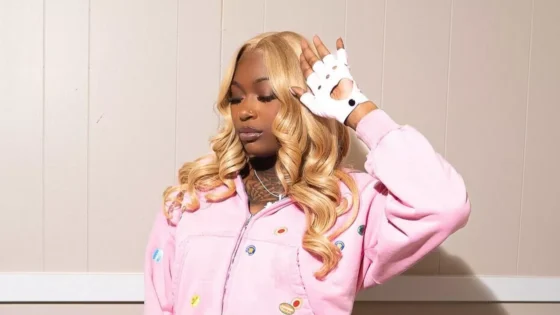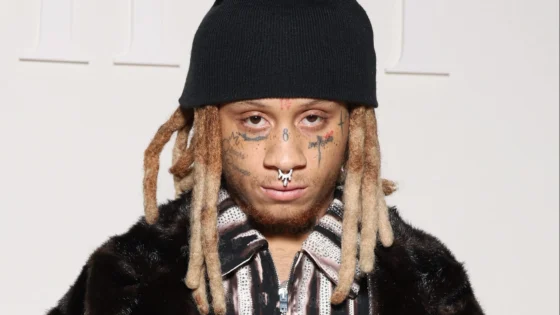TV
After “The Princess and the Queen,” House of the Dragon is Looking a Bit Bleak
A time skip doesn’t prevent the Game of Thrones Prequel from getting a bit stale in Episode 6
House of the Dragon, S.1, Ep.6:
“The Princess and the Queen” Review
One of the strongest aspects of House of the Dragon so far is that it has provided a more intimate counterpart to Game of Thrones, trading in its predecessor’s grandeur and epic narrative for a more contained family drama. This approach was risky, and up until now, the risk has paid off spectacularly (albeit with some notable flaws). However, as of its sixth episode, “The Princess and the Queen,” the series seems to be losing its momentum and drying up a bit.
Plot-wise, the episode is straightforward. It starts off with a time jump, establishing that we are now ten years after the end of the previous episode, which saw the marriage of Rhaenyra (now played by Emma D’Arcy) and Laenor (now John Macmillan). Rhaenyra now has three sons, while a now thoroughly-jaded Queen Alicent (now Olivia Cooke) has two sons and a daughter. Rhaenyra is also having an affair with Harwin (Ryan Corr), while her husband has an affair with Qarl (Arty Froushan), showing that their agreement for a comfortably open marriage has continued. Unfortunately, the likelihood that Harwin is the biological father of Rhaenyra’s children causes rumors and suspicions to grow, and Rhaenyra’s claim to the Iron Throne continues to be threatened by Alicent’s children.
Part of the issue with “The Princess and the Queen” is repetition; the episode doesn’t seem to trust its audience enough to understand what’s going on, so it feels the need to endlessly repeat the same themes and concepts without developing them any further. There are conversations in this episode that are almost literally recycled from previous ones, and the show is clearly struggling to find anything new to say; rather than pushing ideas further, we simply get a rehash of what’s already there. This repetition, combined with a very misguided character choice (which I can’t get to here in the spoiler-free zone, but will be touched on in the spoiler-filled “Final Thoughts” section at the end) ultimately leaves the episode feeling disappointing and unsatisfying.

It seems as if “The Princess and the Queen” is trying really hard to make parallels between what’s happening in the season’s “second act” after the time skip and what has happened before. However, there’s a difference between emphasizing similarities and simply rehashing what’s already been done, and this episode falls into the latter category. Rather than trying to emphasize the subtle similarities between past and present that show how certain patterns never end, the series instead simply re-shoots the same scenes with different characters. There is little difference between Alicent’s conversation with her son Aegon (Ty Tennant) about how his potential claim to the throne puts his life at risk and the identical conversation that a younger Alicent (Emily Carey) earlier had with her father (Rhys Ifans). This scene seems to mostly be here in case less attentive audiences didn’t understand the first time around, or in case people simply forgot. A later scene between Daemon (Matt Smith) and his wife Laena (Nanna Blondell) is also almost directly ripped from an earlier episode; in this case, what is clearly an attempt to create a parallel or comparison between two different moments inevitably ends up just repeating the same structure a bit too much with too little variation to keep it impactful.
The result is, ultimately, an episode that feels functional and expositional, rather than artistic or entertaining. Worried about making sure that the audience knows what’s going on, and possibly trying to compensate for the 10-year time jump, the episode feels more like a Wikipedia article than a television episode in its dry, textbook-like explanation of themes that have been more beautifully and subtly explored in previous episodes. At this point, audiences already get the fact that Alicent and Rhaenyra have tension between them causing allies to choose sides and establish stakes in the conflict; it would be nice to see this tension lead to interesting moments and scenes instead of just being played as one note.
On the note of repetition: Alicent’s wicked secret advisor Larys Strong (Matthew Needham) continues to be an unsubtle nod to Petyr Baelish (Aidan Gillen). The character essentially repeats the exact archetype that Baelish filled without adding anything new, leading Larys to just feel like “bargain bin Baelish.” This is not a slight against Needham, who is clearly doing the best he can with a dull character; however, the writers will have to give Larys more personality traits than simply “manipulative, slippery, and scheming” if they are to make an impact with him.

This isn’t to say that the episode is entirely a waste. In a 10-episode series, it makes sense for 1 or 2 episodes to sacrifice a bit of quality just to make sure that fans are clear on plot and character dynamics, so this episode’s functional nature doesn’t necessarily make it terrible. In some ways, “The Princess and the Queen” is a one-hour version of recap segments like “and that’s what you missed on Glee!” The episode does clearly establish what has transpired over the past 10 years, introduces quite a few new characters, and makes everyone’s allegiances, opinions, values, and emotional state very clear. While it may be a bit textbook-like, the episode does set an unambiguous and clear platform for later episodes to hopefully build on.
In contrast to the rest of the episode, which is fairly dull, the episode’s B-plot in Essos manages to craft much more interesting dialogue and much more nuanced character work. For the most part, it is the most emotionally and intellectually engaging part of the episode, and it is very well done. Daemon and Laena are more well-written than the rest of the characters in this episode, and Smith and Blondell execute the roles perfectly. Unfortunately, this B-plot ends on a confusing and extremely frustrating note (more on that in the “Final Thoughts” section to avoid spoilers), and its direction ultimately sours a section that is otherwise a highlight of the episode.
One thing that remains consistent about House of the Dragon is its performances; the cast continues to impress, and the new additions manage to live up to the existing performers. Emma D’Arcy is a perfect fit for Rhaenyra; they immediately ease into the role and capture the ferocity and complexity of the character phenomenally. While it will be hard to say goodbye to the amazing Milly Alcock, it is clear that Rhaenyra is in good hands; one can only hope that future episodes give D’Arcy a bit more to work with so they can make Rhaenyra truly shine. Macmillan’s Raenor is fun and charismatic yet sophisticated enough to show maturity and depth beneath the fun-loving exterior. Blondell is absolutely stunning, and her dynamic with her daughter Rhaena (also fantastically performed by Phoebe Campbell) and her husband Daemon give a refined and complex portrait of a character that goes far past what the script provides.
Olivia Cooke has a much harder job. When Emily Carey was playing Alicent, the character had a huge transformation arc, gradually developing from a kind and sweet child to a jaded, suspicious, and deeply unhappy adult. The many stages of Alicent’s development allowed Carey to give a truly remarkable performance that realistically charted an extremely jarring transition in character, establishing her as one of the acting powerhouses on the show. Cooke inherits the character at the end of this arc, meaning that she only gets to portray the last part of her development, putting her at an immediate disadvantage to Carey. That being said, Cooke has done well so far and seems to be the right choice for the character.

On the note of transformations, Fabien Frankel deserves props for effectively communicating how Criston Cole has transformed from an intriguing stranger to a puritanical jerk. Much like Cole, Frankel had audiences effectively wooed by the character’s more endearing traits, making it all the more powerful when his villainous side is revealed. It is exciting seeing Frankel take the character in a new direction, making a once-intriguing character now fun to hate.
Overall, “The Princess and The Queen” won’t be blowing anybody away any time soon. However, it is an effective – if somewhat dry – recap of the major players and their dynamics that allows the series to get important exposition out of the way before (hopefully) following it up with more interesting developments later.
Final Thoughts
Unlike the rest of the review, which aims to be as spoiler-free as possible, this section explores some additional notes on the episode, and may occasionally dabble into major spoiler territory. It may contain spoilers, both for this episode and for the larger ASOIAF universe including novels that have yet to see TV adaptation. Proceed at your own risk.
Last week, I mentioned Game of Thrones’ tendency to introduce interesting queer characters only to brutally and quickly kill them off before developing them at all. This episode has me concerned that House of the Dragon is primed to treat Black women similarly. Game of Thrones really only had one major Black woman (Missandei, played by Nathalie Emmanuel): she was a fantastic character, but the combination of her being the only high-profile Black woman on a show filled with primarily white people and her plotline directly involving her history as a slave drew concern about the show’s racial awareness.
House of the Dragon has introduced more Black characters, and so far the two most prominent Black men (Corlys and Laenor) have been interesting, although they could certainly use more screentime than they have gotten. However, Laena is the first Black woman who has gotten much development, and it is heartbreaking to see her taken away so quickly after her first episode as an adult. Blondell’s performance is so strong, and the character is so intriguing, that it seemed like the show was going to be exploring a complex and compelling Black female character, something which is still, unfortunately, lacking in mainstream fantasy. I was looking forward to seeing more out of Laena, and seeing her taken away so swiftly and abruptly was really disappointing.
Much like Joffrey, it is obvious that Laena had to die at some point for the plot to progress: Daemon can’t marry his cousin if he’s still married to his cousin’s sister-in-law (#JustTargaryenThings). However, Blondell could have at least had more than a handful of scenes in a single episode before being written out; it is the missed potential for a promising character that is most frustrating, not simply the fact that she dies. As I mentioned about queer characters last week: if you’re a minority in Westeros, you simply don’t get enough time on screen to work with before you die, leaving even the most intriguing and well-acted characters less chance to develop and tell their stories than their white, straight counterparts.
The fact that Laena was also a very complex character in Fire & Blood, the novel on which the series is based, also adds to the disappointment, and it is easy to see a bit of mysoginoir creeping into the show’s structure. It’s not as if Laena was a minor character in ASOIAF, or that the writers had nothing to work with; Laena in the novel has relationships, storylines, and adventures that the series completely cuts out, so they actively chose to diminish her character and cut content so that she gets less screentime and development than in the source material. The writers here are following a long-standing Game of Thrones trend where decisions about who gets the most screentime, the longer and more elaborate storylines, and the most development are largely informed by heteronormative and racist structures. They could have shown more of Laena’s story, and she has a lot of story from the source material to work with, but instead this time is used for other things and she only gets a few brief moments onscreen.
Blondell’s brief presence in the show will be missed, and it’s sad that she was written out before she got a chance to do much; at the very least, the few scenes that she did have were remarkable and give us something to remember the character by. The show is now left with one major queer character (Laenor) and two major Black female characters (Laena’s two daughters). Here’s hoping that they get more than one episode and a handful of scenes, and instead get treated with the same amount of development, screentime, respect, and weight that the show gives its other characters.


































